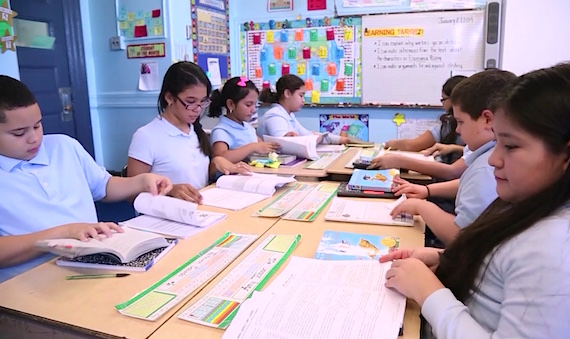Sparking Inquiry with EL Education’s ELA Curriculum
 by Cheryl Becker Dobbertin
by Cheryl Becker Dobbertin
Students in Erin Daly’s fifth grade class at PS 36 in the Bronx are riled up. They’re very concerned that Esperanza’s human rights are being violated, and that she and her family aren’t receiving the protections that they are entitled to.
They dig deep into their Esperanza Rising novel, searching for reasons why Esperanza is being so poorly treated, and pepper their teacher with questions, wondering what can be done. Daly smiles at their protests – this is how learning should be.
Daly’s class, along with millions of other middle and elementary students across the country, is excited to be reading, talking, thinking and writing via Expeditionary Learning’s Common Core-aligned English/Language Arts curriculum (there’s science and social studies, too).
It’s built around what EL calls the “4 Ts” – compelling Topics, clear Targets, worthy Texts, and interesting Tasks. By tending to the Ts, teachers spark students’ interests while meeting the Common Core standards and addressing the instructional shifts.
 A free, open-source curriculum
A free, open-source curriculum
As a first step toward building Expeditionary Learning’s curriculum, EL staff first talked with teachers around the country to identify the most compelling science and social studies topics taught at various grade levels – topics such as the way animals adapt, what refugees experience, how fresh water can be protected, and civil/human rights.
Building ELA curriculum on compelling topics not only captures students’ attention, it also deepens their knowledge. The more knowledge students have about a topic, the better they can comprehend text about that topic, enabling students to be successful with increasingly challenging text.
In turn, the better they comprehend text, the more knowledge they build. Their increased proficiency and knowledge transfer to the next occasion for reading and learning, creating an upward surge that builds on itself and is both highly rewarding and motivating.
What we’re learning about compelling curriculum
If you’re experimenting with building a Common Core-aligned curriculum based on compelling topics, keep in mind:
- Kids care! Consider issues of social justice or the “local angle” on a historical event.
- Align topics to priority science or social studies standards. Ask yourself, is this topic central, enduring, and relevant?
- Frame your curriculum by crafting guiding questions that drive the “so what?” and “who cares?” for students.
- Structure time and methods for students to return to guiding questions throughout the unit.
- Consider crafting both a “content” guiding question and a “literacy” guiding question.
Then we worked on Targets
After compelling topics were chosen, EL staff began teaching the more than 80 teachers, librarians, and school administrators involved in developing the curriculum about the second “T” – targets. Targets are student-friendly, standards-based statements of learning, usually written in “I can” language, such as “I can select evidence from Esperanza Rising to prove that Esperanza is changing” or “I can support my claim that protecting fresh water is essential to human survival.”
According to Rick Stiggins, who writes extensively about the power of using learning targets with students, they form the basis of a series of effective classroom assessment practices.
The goal is not merely to have targets, or simply to post them or refer to them at the beginning of a lesson, but to support students in “tracking their progress” by ensuring that they know how their achievement of targets will be measured.
Tracking conversations between teachers and students might sound like this – “We’ve been working every day on selecting the best evidence from the text to support our thinking. I’m returning your exit tickets from this week where you’ve shown me your thinking about this. Can you get out your learning target trackers? Based on the exit tickets, make a note on your tracker about how you’re doing with this target.”
Developing learning targets means first deeply understanding the specific, grade-level standards a unit of study is designed to address. Once standards-aligned targets are created, teachers can then develop the specific formative and summative assessments they will use to monitor students’ acquisition of a particular standard or set of standards.
What we’re learning about good learning targets
If you’re creating a Common Core-aligned curriculum that will include learning targets, be sure to:
- Read the actual standards closely; unpack them to know what mastery would look and sound like for each standard in each grade level that will be incorporated into the curriculum.
- Align supporting materials to specific standards (e.g. this graphic organizer aligns with RI.4.2).
- Design assessments for each target you expect students to master in a given unit.
- Bundle both content and literacy targets together.
Next we needed Texts
Selecting texts is a critical component of designing Common Core-aligned curriculum. Texts should be chosen after targets are developed as not all texts are suited for standards based teaching.
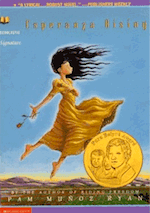
Remember that “text” can include many mediums, not just books and articles. Sets of data and other graphics, historical documents, blog posts, and all kinds of other things are “text.” In Expeditionary Learning, it’s not uncommon to find students grappling with a “mystery text” — something vague, challenging, or purposefully unclear – as a way to hook students into a new topic. Trying to solve the mystery of what something says or means is a great way to motivate readers to give new material a try.
What we’re learning about choosing texts
If you’re designing a Common Core-aligned curriculum, you’ll want to keep the following in mind about choosing texts:
Choose Appropriately Central Texts
These are the texts at the heart of a unit of study. Use both quantitative and qualitative measures to ensure that the central text falls within the complexity band expected at a grade level.
- Pair informational and literary texts: toggle between them to build background knowledge and engagement.
- Study the text closely; align texts to specific standards or “bundles” of literacy standards.
Use Additional Texts Strategically (and collaborate with a reference librarian or media specialist on this!)
- Seek shorter texts from reputable sources (e.g. Readworks.org, Library of Congress, awesomestories.org)
- Seek provocative texts that offer multiple perspectives.
Foster Research through Expert Groups
- Ensure all students have the opportunity to read a lot about a topic.
- Provide a range of texts at different reading levels, yet ensure all students have access to the central, complex text.
Promote Additional Reading
- Set up a year-long structure to promote independent reading both in and outside of school.
- Build recommended texts lists (perfect work for library folks) so that students can easily identify additional texts when they want to read more on a topic.
Provide Variety
- Students need all kinds of texts on the topic – challenging and easy, serious and funny, informational and literary – about things they want to read. Great classroom libraries and access to the school library are more important than ever before.
Tasks help students put learning to work
Tasks are activities that students complete in order to build ideas either alone or in pairs or groups, capture their thinking, and ultimately, show what they know. Expeditionary Learning’s curriculum contains a wide variety of tasks, from simple “notecatchers” (graphic organizers) and protocols (discussion structures), to short on-demand assessments in which students answer questions or write to a prompt, to extended performance tasks that students complete over several weeks with plenty of scaffolding and feedback.
Each one of these types of tasks serves a strategic and standards-aligned purpose. Creating tasks is the last “T” on purpose. When you’re clear on the targets you want students to meet – and the texts that they will read – then it’s much easier to efficiently find or develop tasks that get students where you want them to go.
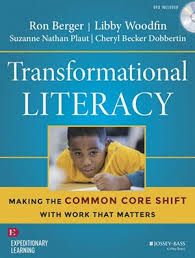
Over the course of the curriculum, students should develop all three text types – narrative, informational, and argumentative. In Expeditionary Learning schools, students often complete performance tasks in a real world format (such as an informational brochure or a persuasive public service announcement) using technology, and share their work with an authentic audience.
What we’re learning about good Tasks
As you choose or develop curricular tasks:
- Be sure students are taught, practice, and get feedback on all aspects of a target before being assessed.
- Ensure assessments require students to work with text-based evidence.
- Plan time for students to unpack academic language of the rubric or co-construct rubric with teacher.
- Create 3-4 day cycles that integrate reading, thinking, talking, and writing.
- Include academic writing weekly (i.e. short-constructed responses, paragraphs, extended responses).
- Balance scaffolded writing (with lots of teacher support and feedback) with “on-demand” reading, thinking, and writing.
- Provide meaningful reasons for students to revisit texts.
Begin to explore the EL curriculum materials and concepts
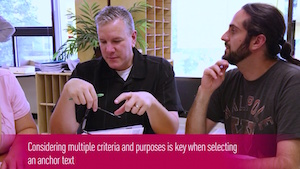
And please explore and “exploit” Expeditionary Learning’s open-source curriculum as much as you like. Borrow, adapt, and engage with other users. A good place to start? This page breaks down our modular structure. And you can examine the ELA (3-8), science (6-8) and social studies (8-10) modules here. Finally, we invite you to leave feedback and help us to continue to polish the work.
[Editor’s note: “Great teachers are artists, too.” Read Cheryl Dobbertin’s essay at the J-B/Wiley blog.]
_____
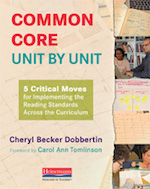

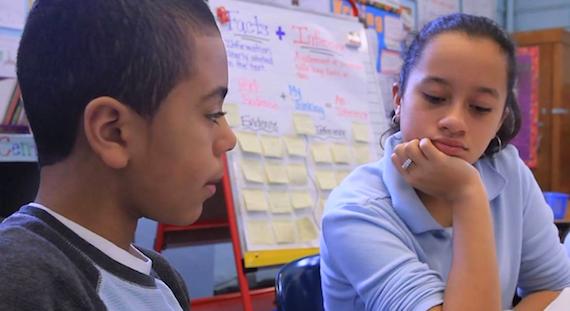

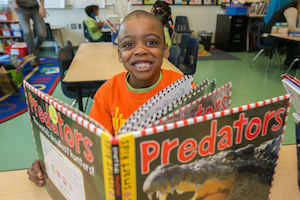 These are the texts at the heart of a unit of study. Use both quantitative and qualitative measures to ensure that the central text falls within the complexity band expected at a grade level.
These are the texts at the heart of a unit of study. Use both quantitative and qualitative measures to ensure that the central text falls within the complexity band expected at a grade level.
